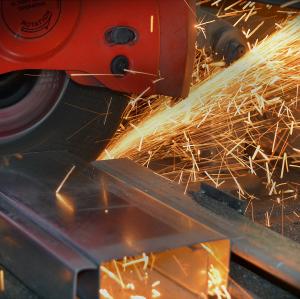
Your go-to metal fabrication shop have likely perfected the fabrication processes needed to yield your desired fabricated project results. The various operations and sequences used in the fabrication process will vary based on the capabilities of the fabrication shop, and from project to project, but will likely encompass a few common fabrication techniques.
In today’s blog, our goal is to bring it back to basics by outlining the 5 most common processes used in metal fabrication shops.
What is metal fabrication?
At its core, metal fabrication is the manipulation of raw metal material to produce metal structures, components, machines, etc. The ways in which the metal is manipulated are the types of processes used to achieve the desired end result. Fabrication processes require a degree of prior planning and preparation beforehand in order to avoid risk of error.
What are common metal fabrication processes?
- Cutting – is one of the most common fabrication techniques used. As its name suggests, cutting involves the process of splitting metal sheets into smaller sections. Cutting can be achieved by using a number of industrial machines i.e. laser cutting machines, plasma torches, etc.
- Folding – is one of the more complicated fabrication techniques commonly used. Folding involves the manipulation of a metal surface to be bent at a designated angle. Some metal fabrication shops are better equipped with the necessary machinery for metal folding applications.
- Welding – welding is essentially the bonding of two separate metal parts into one through the application of intense heat where you want the two points of the separate metal parts to bond.
- Machining – any event in which a machine is used to reduce the size or remove parts of a metal work piece can be described as machining. This is typically conducted using a lathe, which will rotate the work piece toward to tools to remove its corners and edges.
- Punching – instances where holes or perforations are made into a metal work can be described as punching. Punching is achieved when the metal work piece is placed underneath a die and pierced with a drill. To achieve the correct diameter of the hole, the circumference of the drill must fit correctly through the die component.







